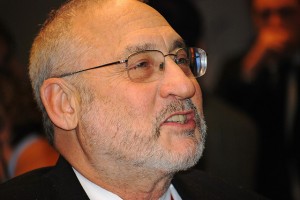The Dangers of Long-Term Unemployment
Columbia University professor Joseph Stiglitz gave a thought-provoking presentation at the World Business Forum conference in New York last week. Stiglitz — one of the economists credited with foreseeing the global financial crisis that occurred in 2008 and one of seven Nobel-Prize-winning alumni of the MIT Department of Economics doctoral program — did a good job articulating the dangers that long-term unemployment pose to the U.S economy as a whole — not just to those unemployed or underemployed. Noted Stiglitz:
“Right now, one out of six Americans who would like a full-time job can’t get one. You know, that’s really unacceptable….
What worries me even more is that a very large fraction [of the unemployed] — almost half — are now long-term unemployed. If you’re long-term unemployed, getting back in the labor force is very difficult, and when you do get back, your wages are much lower. We’re destroying our human capital; we’re weakening our human capital. And that’s really going to make it more difficult for us to get back to robust recovery.”
Stiglitz’ proposed solution? He thinks that, despite the national debt, the U.S. government needs to spend more on stimulus — but with a focus on investments in areas like infrastructure, schools, technology and retrofitting the economy to deal with global warming.
Such investments, Stiglitz maintained, will promote not only short-term growth and jobs — but also long-term economic growth. He argued that, because the U.S. government can borrow long-term at low rates, investments in areas like infrastructure and technology can be worth the additional debt required to finance them — because they will, in effect, increase the assets of the U.S economy.





